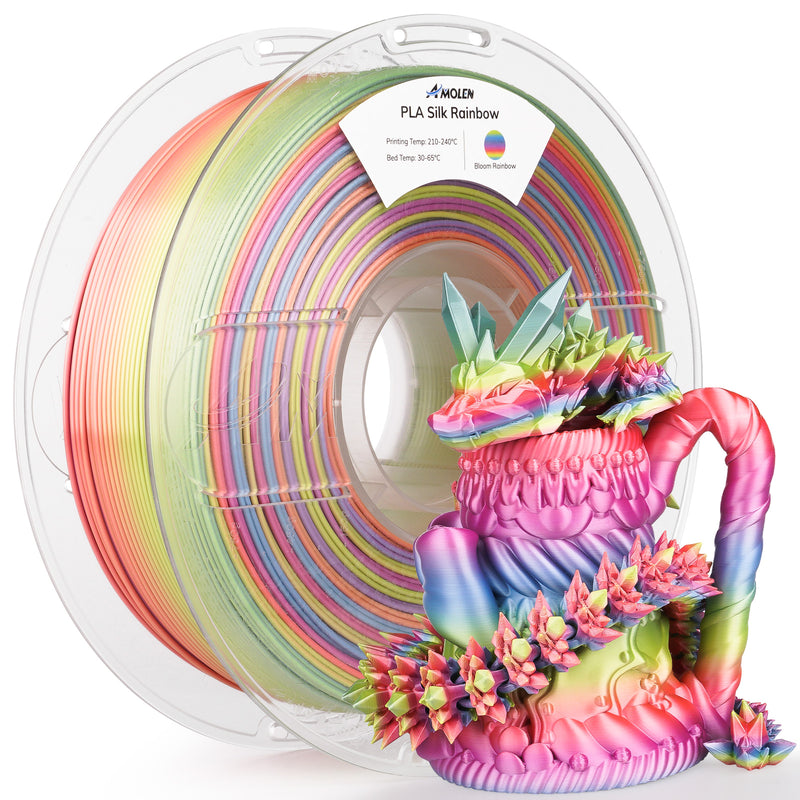Unlocking the Secrets of PLA Filament: The Ultimate Guide to Its Marvelous Properties!
In the ever-evolving world of 3D printing, one material has captured the attention of both hobbyists and professionals alike: PLA filament. Standing for Polylactic Acid, PLA is not just any ordinary printing material; it is a game-changer that has opened new avenues for creativity and innovation. Made from renewable resources such as cornstarch or sugarcane, PLA filament is a biodegradable option that aligns with the growing demand for sustainable practices in manufacturing. This article aims to delve deep into the properties and benefits of PLA filament, highlighting why it has become a favorite among 3D printing enthusiasts. Whether you are a seasoned 3D printer or just starting out, understanding PLA filament can significantly enhance your printing experience.

What is PLA Filament?
PLA filament is a type of thermoplastic made from renewable resources, primarily derived from corn starch or sugarcane. This biopolymer is produced through a process of fermentation and polymerization, which converts the sugars from these plants into lactic acid, and subsequently, into polylactic acid. The result is a material that is not only environmentally friendly but also suitable for 3D printing. Unlike traditional plastics that are petroleum-based, PLA filament offers a more sustainable alternative, making it a popular choice for environmentally conscious makers. Its unique composition allows for vibrant colors and a smooth finish, appealing to both aesthetic and functional aspects of 3D printing. With its roots in nature, PLA filament represents a significant shift toward sustainable practices in the manufacturing sector.
Properties of PLA Filament
PLA filament boasts several key properties that make it a top contender in the 3D printing landscape. One of its primary attributes is biodegradability, which means that under the right conditions, it can break down into natural components, minimizing environmental impact. Additionally, PLA is known for its ease of use, particularly for beginners. It has a low tendency to warp during the printing process, allowing for a smoother printing experience. The melting point of PLA typically ranges between 180°C to 220°C, making it compatible with most standard 3D printers. Its tensile strength is also commendable, providing adequate durability for a variety of projects. Overall, these properties contribute to PLA's reputation as a reliable and user-friendly material for 3D printing.
Advantages of Using PLA Filament
There are numerous advantages to using PLA filament for 3D printing. First and foremost, its safe usage makes it a preferred choice, especially in educational settings and for personal projects. PLA is non-toxic, which means it produces fewer harmful fumes during printing compared to other materials. Furthermore, the vibrant range of colors available allows for creative expression in projects, whether you are designing prototypes or final products. Friends of mine who have experimented with PLA have noted its ability to create intricate designs with sharp details, thanks to its excellent layer adhesion. Another significant advantage is its suitability for various applications, from creating decorative items to functional prototypes. This versatility makes it a must-have material in any 3D printer's toolkit.
Applications of PLA Filament
PLA filament finds its way into numerous applications across various industries. In education, teachers use it to create engaging models that enhance learning experiences for students. In healthcare, PLA is utilized for producing patient-specific models and prototypes, aiding in surgical planning and patient education. The consumer goods sector also benefits from PLA, with items ranging from toys to household products being made with this material. For instance, a friend who runs a small business has successfully developed a line of eco-friendly kitchen gadgets using PLA, highlighting its adaptability in real-world scenarios. The possibilities are virtually endless when it comes to projects that can be created with PLA filament, making it a versatile choice for both personal and professional endeavors.
Considerations When Using PLA Filament
While PLA filament offers many benefits, there are also considerations to keep in mind when using it. One notable drawback is its heat resistance; PLA can start to deform at temperatures above 60°C, making it less suitable for applications that may experience high temperatures. Additionally, proper storage is essential to maintain the quality of PLA filament. It is best kept in a cool, dry place, away from moisture, which can lead to printing issues such as clogging. To optimize your printing conditions, ensure that your printer's bed is calibrated correctly, and consider using a cooling fan to help with layer adhesion. These tips can significantly improve your printing experience with PLA and help you make the most of this remarkable material.
Key Takeaways on PLA Filament
In summary, PLA filament stands out as a remarkable material in the world of 3D printing, thanks to its unique properties and numerous advantages. Its biodegradability, ease of use, and versatility make it an ideal choice for a wide range of applications, from educational projects to professional prototypes. By understanding the intricacies of PLA filament and its potential drawbacks, you can better leverage its benefits for your 3D printing needs. As you embark on your 3D printing journey, consider incorporating PLA filament into your projects and experience firsthand the magic it brings to creative expression and sustainable practices.



